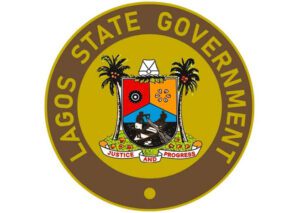Using a corporate profile and CV to communicate your organisational and personal competence (4)
By Goke Ilesanmi
Last week, we said having an objective statement that is really catching is the best thing for your CV. We added that if you are actually not sure of the type of job you are looking for, you can adapt your CV to each type of job you apply for because there is nothing wrong with having several different CVs, each with a different objective, specifically composed for a different type of position. We said the Summary or summary of qualifications segment consists of several concise statements that focus the readers’ attention on the most important qualities, achievements and abilities you have to offer. We also discussed the accomplishments sub-section.
EVIDENCE SECTION
This is the second part of an effective CV. This name is only descriptive or suggestive in that there is actually no CV section basically tagged evidence. By evidence, we refer to all the mandatory and optional information you must include on your CV, e.g. chronological work history with dates, education, affiliations, list of software mastered, etc.
It is better to place all this information in the second half of the CV. Put the strong part in the beginning, and all the less exciting information afterwards. This allows the prospective employer to have better information about where you have worked, how long, your education, etc.
In short, for your CV to be effective, there must be a striking assertions section, and a well-ordered “evidence” section for the sake of communicating that a great CV is not about just giving information but about advertising. Paradoxically, experts say a great CV does not have the evidence section. It is not that the section is not there at all, but everything is considered one big assertions section. That is, every single word is deliberately framed to have the desired effect because a great CV is one big advert disguised as a history of your working life.
The decisions you make concerning what information to emphasise and what not to emphasise should be based on your consideration of every word of your curriculum vitae as an important part of the assertions section. The evidence includes some or all of the following sub-sections according to experts:
Experience
Here, you make a list of jobs in reverse chronological order. Nicholas Lore, an international career management coach says you do not need to go into detail on the job or jobs done early in your career but focus on the most recent and/or relevant jobs.
Lore adds that you can summarise theearliest jobs in one line or very short paragraph, or list only the bare facts with no position description. Decide which is more impressive: your job titles or the names of the firms you worked for; then consistently begin with the more impressive of the two, perhaps using boldface type.
You may want to describe the firm in a phrase in parentheses if this will impress the prospective employer. Put dates in italics at the end of the job, to de-emphasise them. Exclude months, unless the jobs were held less than a year. Include industrial attachment and major volunteer roles if desired; because the section is taggedExperience. So it does not mean you can only include jobs you were paid to do.
Education
In this sub-segment, you list education in reverse chronological order, degrees or licences first, followed by certificates and advanced training. Set degrees apart to make them easily visible. Put in boldface whatever will be most impressive. Exclude any details about college except a major one. Include grade point average only if over 3.4. List selected course work if this will help convince the prospective employer of your qualification for the targeted job.
You can include advanced training, but be selective with the information, summarising the information and including only what will impress the prospective employer.
If you are working on an uncompleted degree, include the degree and, in parentheses, the expected date of completion (expected 200x).
If you did not finish college, start with a phrase describing the field studied, then the school, then the dates (the fact that there was no degree may be missed).
Professional affiliations
Here, you include only those that are current and will be relevant and impressive. This is a good section to include your membership of a group targeted for special consideration by employers, if you belong to one.
Civic/community leadership
This segment can be included if the leadership roles or accomplishments are related to the target job and can show skills acquired. For instance, a treasurer of a community, who has had a lot of achievements in this position, can include such accomplishments in his or her CV if he or she is seeking a job in a corporate organisation as a finance manager. So also can a successful Sunday School teacher in a church include his or her achievements if or when looking for a teaching appointment in a school. However, you need to be careful as far as the inclusion of political affiliations is concerned, as they could be a plus or minus with an employer or company.
Publications:Only published works should be included here and summarised if they are many.
To be continued
PS: For those making inquiries about our Public Speaking, Business Presentation and Professional Writing Skills programme, please visit the website indicated on this page for details.
GOKE ILESANMI (FIIM, FIMC, CMC), CEO of Gokmar Communication Consulting, is an International Platinum Columnist, Professional Public Speaker, Career Mgt Coach and Certified Mgt Consultant. He is also a Book Reviewer, Biographer and Editorial Consultant. Tel: 08056030424; 08055068773; 08187499425
Email: [email protected]
Website: www.gokeilesanmi.com.ng




